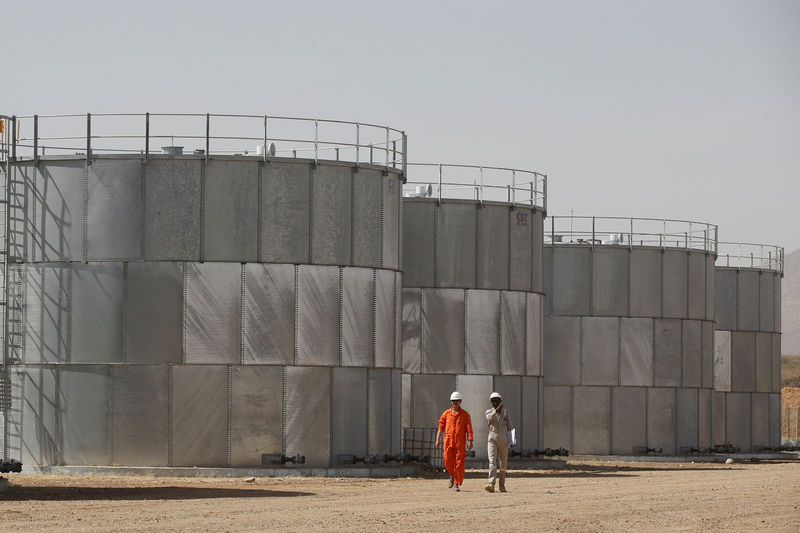By Henning Gloystein
SINGAPORE (Reuters) - Oil prices fell on Monday after climbing to their highest this year earlier in the session as China reported automobile sales in January fell for a seven month, raising concerns about fuel demand in the world's second-largest oil user.
International Brent crude futures were at $66.20 per barrel at 0353 GMT, down 5 cents from their last close. Brent earlier climbed to $66.78 a barrel, the highest since November 2018.
U.S. West Texas Intermediate (WTI) crude oil futures were at $55.82 per barrel, up 23 cents from their last close. WTI prices also rose their highest since November, at $56.13 per barrel, earlier on Monday.
Traders said Brent prices slipped after China reported the weak car sales data.
China's vehicle sales last month fell by 15.8 percent versus the same month in 2018, an industry association said on Monday. This continued the 2018 trend, in which China recorded the first annual drop in vehicle sales on record.
So-called new energy vehicle sales in January, which include electric vehicles, registered a 140 percent increase, underscoring expectations that oil demand from cars may peak in China in the coming years.
Despite this data, global oil markets remain relatively tight because of supply cuts organised by the Organization of the Petroleum Exporting Countries (OPEC) and some non-affiliated producers like Russia. The group of producer countries agreed late last year to cut output by 1.2 million barrels per day (bpd) to prevent a large supply overhang from swelling.
Further supporting crude prices have been U.S. sanctions against oil exporters and OPEC-members Iran and Venezuela.
Traders said financial markets, including crude futures, were also generally supported by hopes that the United States and China would soon resolve their trade disputes, which have dragged on global economic growth.
"Positive signs in the U.S.-China trade talks helped boost sentiment across markets," ANZ bank said on Monday.
At least partly offsetting the supply cuts has been a surge in U.S. crude oil production by more than 2 million bpd in 2018, to a record 11.9 million bpd.
And there are signs that U.S. output will rise further.
U.S. energy firms last week increased the number of oil rigs looking for new supply by three, to a total of 857, energy services firm Baker Hughes said in a weekly report last Friday.
That means the U.S. rig count is higher than a year ago when fewer than 800 rigs were active.

U.S. crude output & drilling levels: https://tmsnrt.rs/2Eh2i9w
